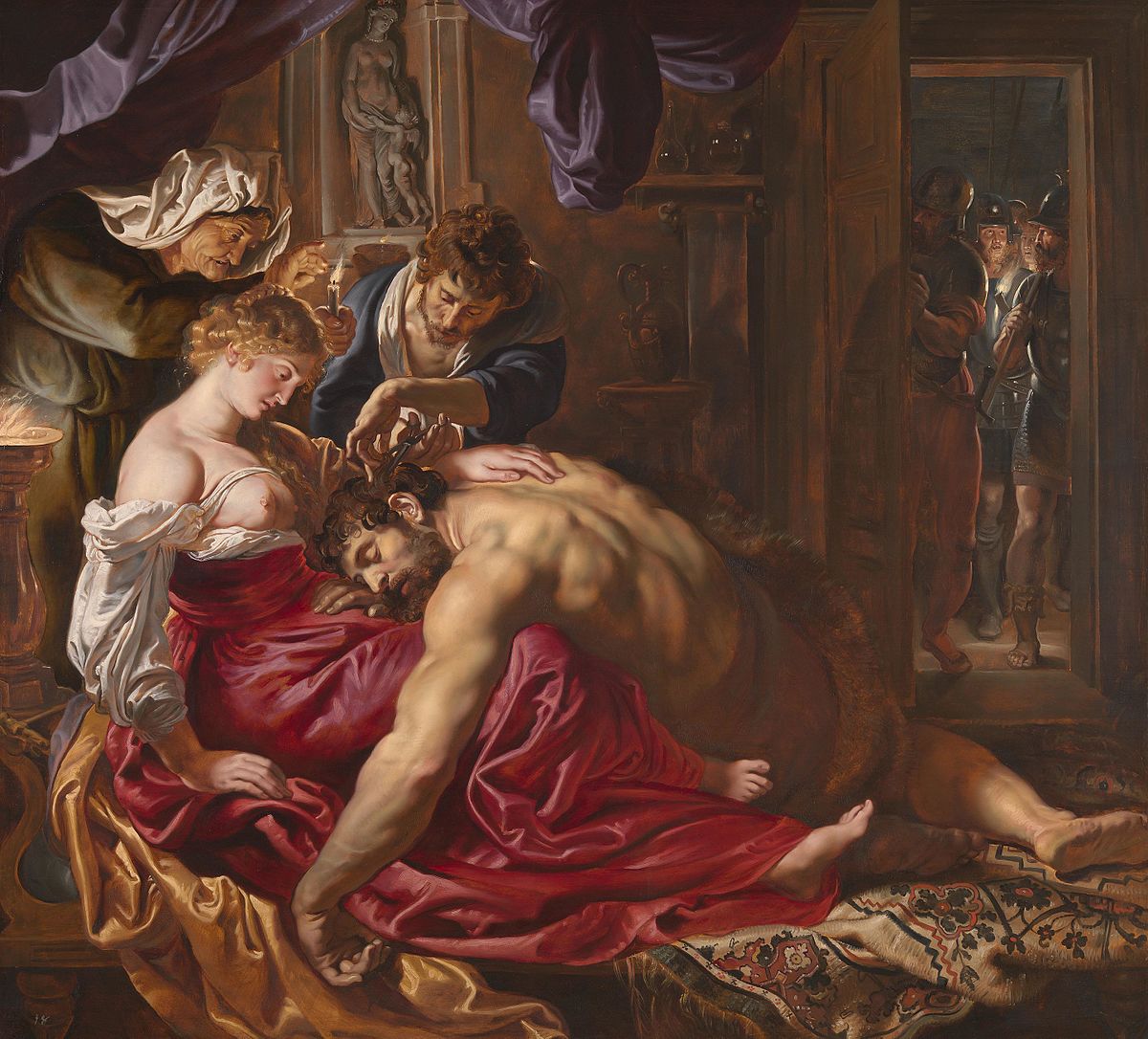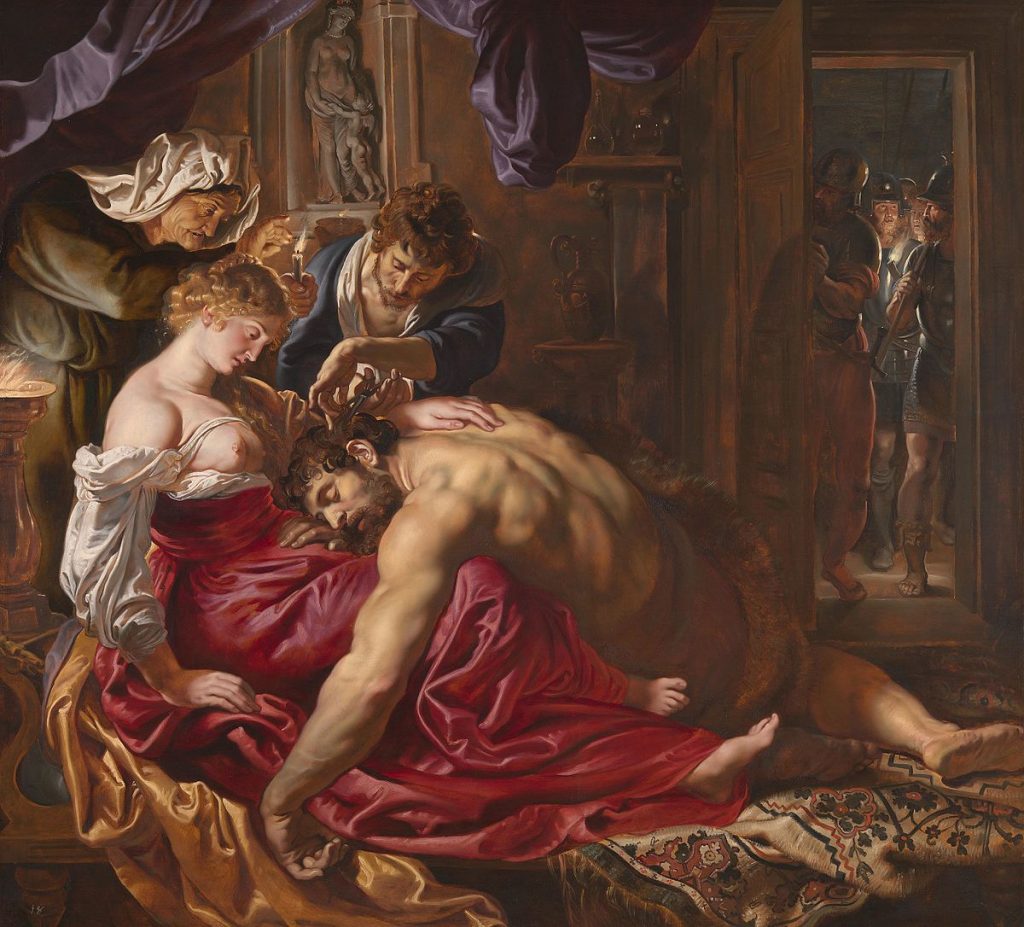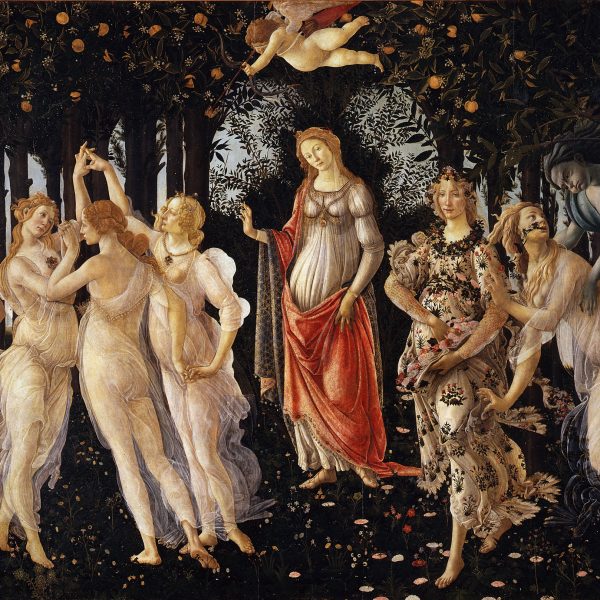SAMSON AND DELILAH – RUBENS
The painting depicts the episode on Samson and Delilah from the Old Testament. According to the story, Samson is a Hebrew hero from the Israelites and has great strength which enables him to slay a lion with bare hands or massacring an entire army with a jawbone of an ass. Samson has been named as the enemy of the neighbouring tribe Philistines* which have been in constant struggle with the Israelites. Despite their numerous efforts, the Philistines could not manage to kill Samson since he overcame their attacks with the superhuman strength he possessed given by God. In these circumstances, the Philistines decided to use Delilah, the woman Samson loved (a prostitute according to some sources), to capture Samson. Delilah was bribed by the Philistines to reveal Samson’s secret behind this incredible strength.
Attempting several times to learn Samson’s secret, Delilah cannot be successful since Samson teases her and tells different lies on how he can be bound and lose his strength. Every time Delilah believes him and does what he tells her, but, she cannot succeed. Finally one day Samson wears down and gives in to her request and reveals that the source of his strength is his long hair, which he consecrated to God and had never cut. Upon learning this, Delilah lays with him and afterwards woos him into sleep. While Samson is sleeping on her lap, she cuts his hair and renders him powerless. Losing his strength granted by God, Samson is captured easily by the Philistines. Philistines then gauge his eyes out and make him a prisoner.
Ruben’s painting portrays the climax of the story. Samson has fallen asleep on Delilah’s lap sleeping peacefully. Samson is depicted as an epic hero with his broad back and muscular arms. He is clothed only with an animal pelt around his waist, and that emphasizes his wild nature. Although Samson is portrayed with wild and strong features, he sleeps like a baby on Delilah’s lap. Delilah’s hand compassionately touching his shoulder indicates how he was wooed into sleep and is unaware of the situation. Delilah’s bright red coloured dress has a magnificent look evoking a sensetion of lust. Her open breasts refer to the carnal side of the story.
The identity of the old woman behind Delilah is not known, but considering the fact that Delilah could be prostitute, she can be assumed as her procuress. The faces of Delilah and the old woman resemble each other, which may be taken as a sign of Delilah representing the old woman’s past, and the old woman representing Delilah’s future.
Another figure in the painting is the man cutting Samson’s hair. This Philistine man holds his hands in crossed position while cutting the hair. This weirdly crossed hands symbolizes deception indicating that Samson has been tricked by Delilah. Another symbol in the painting is the statue of Venus** and her son Cupid*** in the background niche. The statue of the Goddess of Love and her son refers to the reason of Samson’s situation: the delusion of love. The right side of the painting shows how the story will continue. The Philistine soldiers waiting behind the ajar door will come into the room quite soon and capture Samson.
One of the most striking points of the painting is how Rubens used light and shadow. Rubens had been to Italy and experienced the famous Italian Baroque painter Caravaggio’s work and his chiaroscuro**** technique. Skillfully using the chiaroscuro technique, Rubens expresses the light in the painting from three different sources. The fire burning behind Delilah, the candle hold by the old woman and the torch of the Philistine soldiers. The fire behind Delilah accentuates the body forms of Delilah and Samson, the bright coloured fabrics, the patterned carpet and Samson leg with a dramatic effect. The same dramatic light-shadow effect can also be observed on the faces and hands of the old woman and the man cutting hair. The torch light located outside the room emphasizes the intruding soldiers.
Notes:
* Philistines: Refers not to today’s Palestinians but the Ancient Philistines, which was a Aegean tribe moved to Palestine within the 12th century BC.
** Venus: The Goddess of love in Roman mythology (Aphrodite in Greek mythology)
*** Cupid: The God of love in Roman mythology (Eros in Greek mythology). He makes people fall in love by shooting them with his arrows.
**** Chiaroscuro: The painting technique (meaning light-dark in Italian) mostly developed by Caravaggio, which uses strong tonal contrasts between light and dark to model three-dimensional forms and to create dramatic effects.
Location: National Gallery, London
Date: 1609-1610
Period: Baroque
Sub-Group: Flemish Baroque



